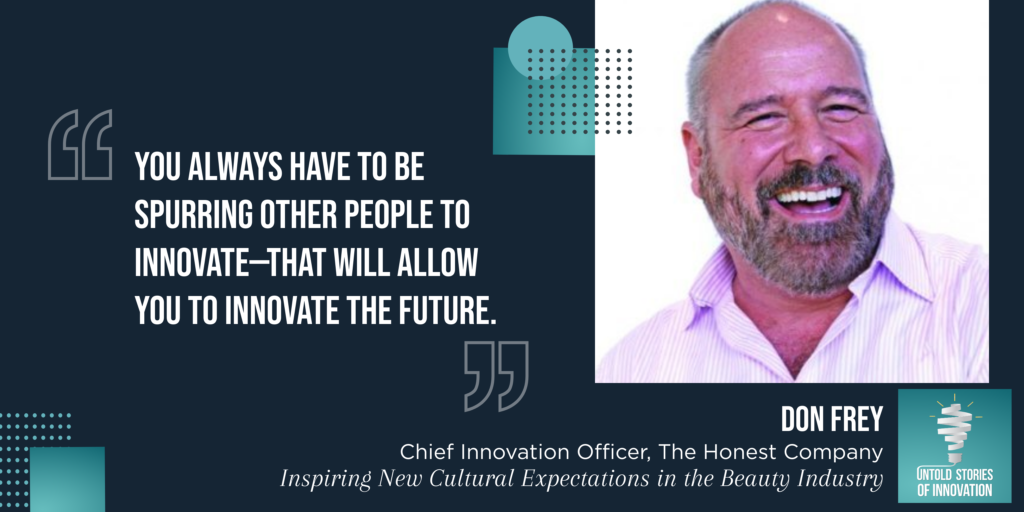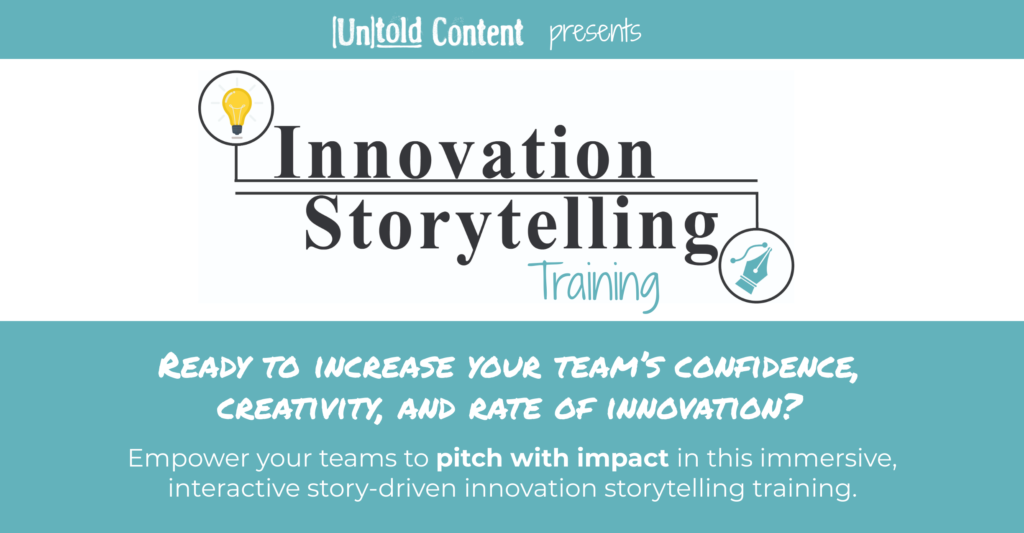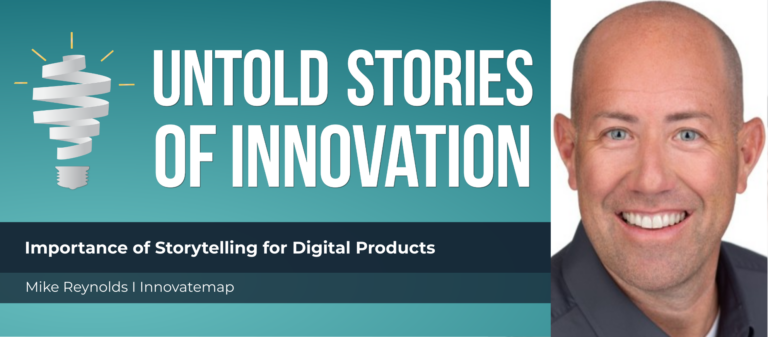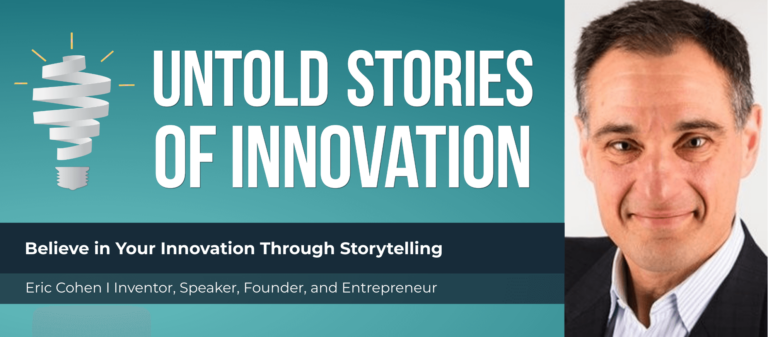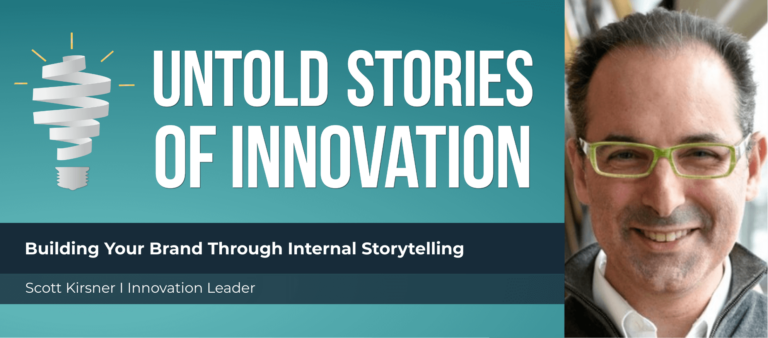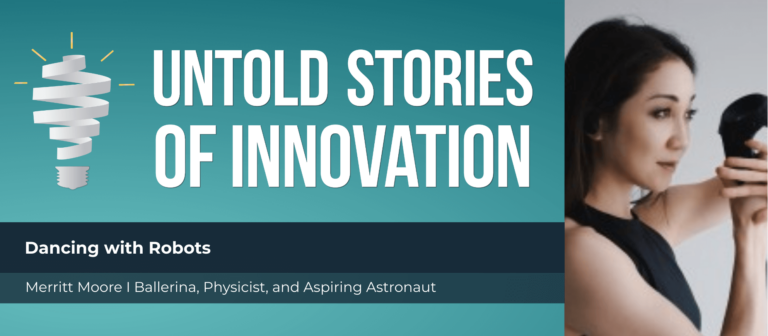Inspiring New Cultural Expectations in the Beauty Industry with Don Frey of The Honest Company
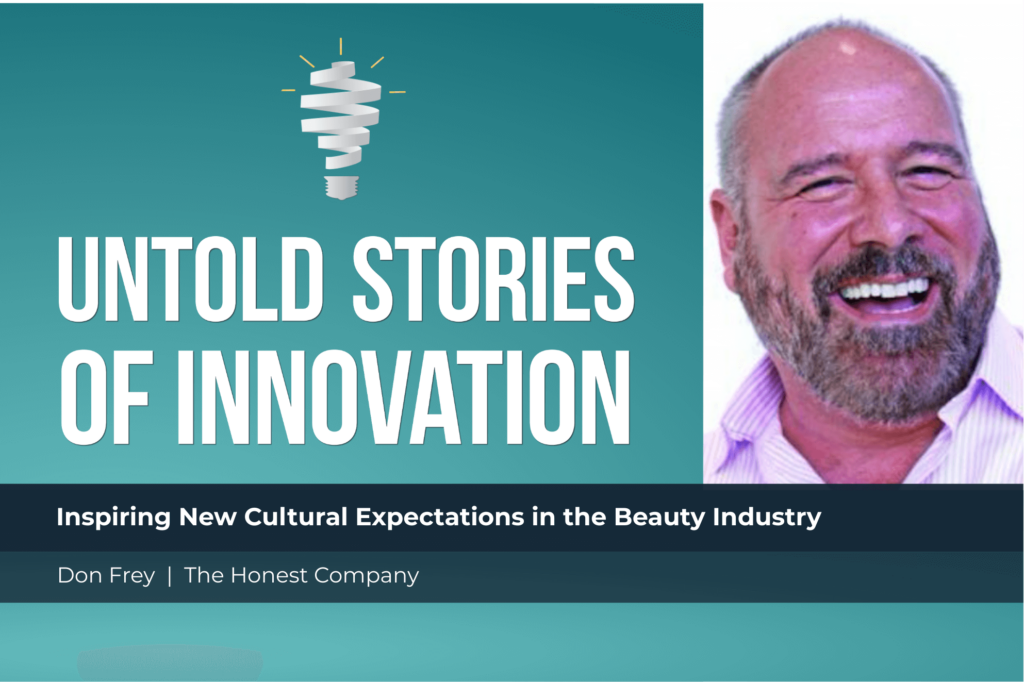
Inspiring New Cultural Expectations - Untold Stories of Innovation
“You always have to be spurring other people to innovate—that will allow you to innovate the future.” —Don Frey, chief innovation officer at The Honest Company
From today’s episode you’ll learn:
Why do stories matter to the innovation process? What values can be instilled in innovators who share stories? How do innovation leaders inspire creators to tell and share their success and failure stories?
We talk with Chief Innovation Officer at The Honest Company, Don Frey, about how to respond to a demand for transparency throughout the innovation process. Don shares with us how this brand has created new cultural expectations in the beauty industry by making the demand for sustainable, ethically sourced products visible. For example, they just released a vegan liquid lip product that is unlike any other. It’s 80 percent naturally derived and moisturizes the lips rather than dries them out. From supporting scientists internally at The Honest Company to helping young people see the potential of their future, all roads lead back to storytelling.
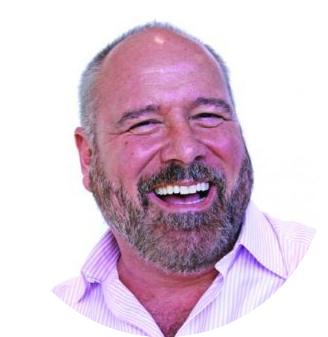
Don has over 30 years experience in the personal care, beauty and household cleaning industries. He started his career at Procter & Gamble working on brands like Pert Plus and Cover Girl. He then moved to Jafra and then Avon where he headed up R&D/Product Development. Don then went on to be Product Czar at Method Products. Since 2019, Don has been the Chief Innovation Officer at the Honest Company. In that time, the company has launched an innovative diaper technology, relaunched the entire Honest Beauty brand and revamped the Baby Personal Care line with new products including an all-natural Eczema Balm.
This episode, Inspiring New Cultural Expectations is powered by Untold Content’s innovation storytelling training. Increase buy in for your best ideas in this immersive and interactive, story-driven experience. Where your teams refine storytelling techniques for their latest projects, prototypes and pitches—and get inspired by 25 epic examples of impactful innovation stories. Learn more at untoldcontent.com/innovation-storytelling-training.
Katie [00:00:04] Welcome to Untold Stories of Innovation, where we amplify untold stories of insight, impact and innovation. Powered by untold content, I’m your host, Katie Trauth Taylor. Our guest today is Don Frey. He is chief innovation officer at The Honest Company. Don, thank you so much for being on the podcast.
Don [00:00:27] It’s a pleasure being here. We’re looking forward to it.
Katie [00:00:29] What an incredible company to work for.
Don [00:00:33] Thank you. It’s a real honor to work here. It’s very fun. And, you know, especially as a head of innovation, I get to do really funny and interesting things every day. So it’s a great place to work.
Katie [00:00:44] Tell us a little bit about innovation at The Honest Company. You know, what sorts of approaches do you take? What sorts of structures do you use?
Don [00:00:55] So, you know, one of the things with The Honest Company is our founder, Jessica Alba, you know, she founded the company looking for healthy solutions for originally moms but also then moms and women as we expanded into beauty products. And so we have this very concerted effort at looking at all the chemicals that we use and packaging that we use—how we can have products that are healthy and sustainable. So it really limits the palette of ingredients that we can use for a lot of things. But I’ve learned that that’s to me is the kind of spur for innovation is because [00:01:38]we can’t just kind of mimic other products and other things that are out there on the market. It gives us the opportunity to take a step back and reexamine what we’re trying to do with the product and kind of reinvent it from scratch as if there hadn’t been something done before. And so, interestingly enough, when you take that approach, you end up with things that not only are clean, but they’re also differentiated frequently, with like better performance and just different characteristics than what other products have on the marketplace.
Katie [00:02:11] You know, I love this point because I think it’s easy for us to think that innovation is better in a sandbox or in a sort of open field where there are no limitations ever. But I think it’s actually more similar to creativity, where—and as a writer, of course, sort of the act of sitting down to a blank page as is never very welcome—
Don [00:02:33] Exactly.
Katie [00:02:33] This environment. But if you put constraints and certain structures around what’s possible and then you have to play within those rules, that’s actually quite enabling. Right.
Don [00:02:44] It is. I think because it forces you to think differently, you know. And again, I think it’s so easy to kind of look at what other people are doing, you know, what’s happening and kind of saying like, oh, I can do a little twist on that. But when all of a sudden, it’s like, well, you know, 80 percent of the ingredients in the formula I can’t use. It really makes you take a step back and kind of solve problems differently. And the other thing I’m finding is with my team in the lab is they’re building different muscles. You know, it’s like as they have worked in this arena and explored, they’re finding like, oh, when, you know—products can only use this, OK. This kind of chemical can maybe be a great way of getting that benefit and doing it in a clean way. And so it’s like they start to build their own repertoire of how they can solve these things. And so they become both innovative and efficient at the same time, if that makes any sense, which is kind of a unique combination.
Katie [00:03:42] Absolutely. You know, I think about the story that your innovation teams are operating within and how beautifully it aligns with, you know, different demands that have come from consumers in recent years for more trust, for more transparency and sustainability, and being able to see where supply chain is coming from. And sort of understand the source of their products and thinking about the other environmental or societal implications of the products that they’re choosing to purchase from. Is that something that is sort of present, in front of mind then, even at the lab bench among the scientists that you’re supporting?
Don [00:04:24] Oh, totally. I mean, it’s—you know, we’re not only looking for ingredients that have the right kind of health profile, but also what’s their sustainability story. Where are they sourced from? You know, we have this bias towards bio-based or naturally derived materials to start off with anyway. But then even looking at those, it’s like, OK, well, where’s that come from and how was it farmed or how was it sourced? And, you know, it’s never perfect, but it’s always one of those things of like, OK, how can we keep pushing things forward? And what’s the next thing that we could do so that, you know—one of my old bosses used to say that perfection is the enemy of progress. And I think that, you know, that’s what we’ve always looked for. It’s like, as long as we’re making the world a little bit better every day, we don’t have to get all the way to perfect as long as it’s better. And that’s, I think—an important point of how to keep innovation running is you can get very caught up in looking for—I have to get to Nirvana. And it’s like, to me, you have to be on that path to Nirvana. As long as you’re moving in that direction, then, you know, there’s always a generation 2.0. I mean, I think that’s where the tech industry has just some great things. It’s like a product launch is not forever. And there’s always that next .0 that you can do with a product that says, here’s how I can make it even better now that I’ve learned a little bit more.
Katie [00:05:50] Can you tell us more about, you know—I think you’re really speaking to the innovative culture at Honest and could you share with us the ways that you use storytelling and story sharing internally to, you know, promote certain values, such as the ones you were just talking about, you know, around being able to be comfortable with, you know, not always feeling like something has to be perfect, right. Being somewhat lean or agile. That’s a value, it sounds like, that’s appreciated and spread throughout the organization. Can you share with us, you know, some of the ways that storytelling might impact your innovation culture?
Don [00:06:31] Sure. I think, you know, one of the things I tell my people is R&D actually needs to be the first salesperson in the process. And so as they’re developing products, you know, that’s something I keep trying to make them think about—is like, how are you going to tell this story? Because we have to sell this product to the marketing people. We have to sell to the salespeople. And the more that we can get in front of that, as we’re formulating or as we’re developing a package, then the better off you are. Start to think about that as you’re actually doing the technical work of putting things together. And so, you know, [00:07:14]one of the things that I’m just a super firm believer in is how do you take technical stories and make them accessible? Because when you do that, what I find is it makes the people at the other end feel smarter. When they feel smarter about a product, then they’re more comfortable using it and recommending it. [19.1s] So, you know, in my past life, I worked for two direct selling companies. I worked for JAFRA Cosmetics and for Avon. And it was something I learned in that environment because those consultants who were going out to sell products, they had to be that pitch. You had to have that kind of finely honed for them or else they’d come up with things on their own. And they were incredibly creative. I mean, there was—you know, when I was at JAFRA, which was like 20 plus years ago, we had a product that was a skin firming complex. And the representatives who used to talk about it said it’s like control top panty hose for your face. And that’s such a—because it sounds wacky, but you immediately get it, you know, and understand it. And so that’s where—that’s what every product needs, is that ability to connect with people with, you know, kitchen chemistry or whatever— that you have that way for a real person, say, like, oh, I get it. You know, I don’t need to know what glycation is. I just need to know how it’s going to affect my face and what I can relate to in the everyday world that will—that makes it understandable. It’s like, oh, glycation is kind of like cooking an egg. OK. So I get that something becomes from fluid to kind of hard and then it doesn’t reverse. Oh, so if you can undo that. Wow, that’d be like making an egg raw again? That’d be pretty cool. You know, so these are kinds of things if you can help people understand it in regular terms. I find it just makes them relate to the products a lot better and also be able to understand and look for the benefits that you’re delivering to the product a lot more readily.
Katie [00:09:11] It’s so encouraging to hear leaders like yourself really appreciate the ability of individuals—no matter, you know, whether they hold subject matter expertise or not—to be able to understand technology and understand science. I think obviously that’s, you know, what I’m most passionate about as CEO of Untold. Since that’s really our mission is to tell technical stories well. But, you know, I think that what I appreciate so much about what you said about making the person feel smart as they listen. One of my favorite research professors used to say your goal in any presentation is to make your audience feel smart, to help them feel like, oh, I get it. And I came to those conclusions on my own, like as the speaker was guiding me toward them instead of standing up there with the intention of trying to amaze them with how smart you are. To me, it speaks to this broader need for us to be able to trust and have hope that the public can be intellectual. And that, and maybe I’m getting a little too theoretical or academic here, but really public intellectualism. I think if we have in our hearts and minds the idea that the public should be able to access knowledge and that science really can be communicated in a way that can help others understand and that we should be able to do that sort of translation as scientists.
Don [00:10:37] And I think its kind of a reality of business today, too. When you look at the effect of social media on a brand’s success, is if you can make those influencers feel smart so that they can talk about your product in a way, that’s how you’re going to build viral support for your products.
Katie [00:10:58] Great point.
Don [00:10:58] More and more, that’s more than you—that’s what makes these products sell. [00:11:04]It’s not an ad that you put on television, or in an ad that you put the magazine nearly as much as it’s getting that groundswell of consumers to be talking about your product and recommending it to other people. And if they feel smart about something, they’re much more likely to recommend it to someone else in person or through their blog or through their podcasts or whatever. [20.9s] So that’s where I think it’s almost more critical now than it ever has been to be successful business.
Katie [00:11:32] I completely agree. And I think companies like Honest just—they get that and there’s a level of being willing to be transparent so that then your influencers can feel confident in how they have a relationship with the brand and have a trust built around the brand. So those conversations and those endorsements come from such an authentic place in a deeper way, really, than any kind of sort of presentation of the advertisement could in the past.
Don [00:12:06] Exactly. And, you know, Honest started as a direct to consumer brand before we entered into retail shelves. And so we have this kind of very deep connection with our own subscriber base. You know, people who buy products through Honest.com And we have a whole group of customer service people that are talking to consumers every day and listening to them. So it’s also a great way for us to get feedback. Which is, you know—the more you can have this conversation with who your audience is and understand what their concerns are or what their frustrations are with existing products, then it really helps you kind of focus and guide you to—again, don’t look at necessarily—it’s always important to look at what other people in the market are doing, but sometimes that’s a blind spot. You know, if you’re listening to people, you can sometimes identify that thing that people aren’t doing that allows you to go into a space where there’s not competition or where you’re uniquely positioned to deliver this to consumer benefit.
Katie [00:13:10] Definitely. Do you find that storytelling operates on a different level in a DTC structure?
Don [00:13:18] Yeah. I mean, it’s we—you know, we spend a lot of time just looking at what’s the information we’re going to put on the webpage and how can we communicate that. And we also have—so, for example, like through our own internal blog, we have things like Toxicologists Tuesday, where we have our in-house toxicologist that will do a post that talks about how we assess product safety. We have time with the chemists. The chemists will put up videos that talk about, hey, here’s what’s cool about this product or do a demo or do something that helps bring the product to life. It’s, you know, it also then makes it fun for—these are people that normally never would have seen in a public place. And they get to talk about their expertise and get feedback from consumers about, OK, what are you interested to hear about? Because, you know, one of the things that for me has been fun is I’m a chemical engineer by training, and I went to school in Texas. And most of my fellow graduates went on to work for oil and chemical companies. And I went to work for a consumer products company. And all the sudden they recognized that—I’d go back to reunions and people were way more interested in my job than they were on their own. Because my job, you have products that affect people every day. It touches their lives. It’s something they’re familiar with. It’s something they have a passion about. And [00:14:43]so that, I think, gives every one of these people that opportunity to share that same kind of passion. It’s like I got into this and I’m doing something maybe very technical, but it’s something that really connects with how people live and what makes their lives better every day or just brings a little bit of joy to their life when they’re maybe not feeling so great. And this gives them the opportunity to say, hey, here’s how I contributed to that. Here’s something neat about that so that you can—here’s your personal hack that you can do. This is how you can use a product in a little bit of different way, get a different benefit from it. So I think it really helps build in terms of that motivation and gives people real-time feedback about what they do does really matter. [42.7s] It’s not just that the product stays stable, but this is how people love and interact with your product.
Katie [00:15:33] Absolutely. Yes. And so the story, the story sharing, it’s really quite more—much more reciprocal. And there’s sort of a two-way communication that’s a lot, you know, sort of more accelerated in a DTC model. I love this example that you shared of—did you say it’s an internal blog at Honest?
Don [00:15:55] No, it’s a blog that we have. I mean, we have regular posts that we place, too, through our website and to our like social media channels to Instagram and Facebook. And so where we have periodic things, where we’ll bring in the technical people to talk about products. And they’ll do a short video that, you know, will talk about, you know, how we assess safety or here’s the interesting technology in this product or here’s what it’s like to mix chemicals together. I mean, sometimes it’s just showing like here’s what it’s like to work in the lab. And it just helps people connect with the company and understand here’s the people making your product. You know, we have both female and male chemists. And so they’ve seen like, oh wow, this is a place where women can work. So, you know, it’s like women can be technical and other stuff. So I think it also supports a whole social movement as well as provides information that helps people understand the product. You know, it’s, you know, one of the things that like, oh, you know, young girls can go on this and see this and say, like, oh, I never thought about being a chemist because maybe that didn’t seem like right. But if I could be a chemist, then I could do cool things like make lipstick. Well, that’s a passion that I have. And so this is how I combine something that is a personal passion of mine with something technical and help them to understand where they can go with their lives.
Katie [00:17:19] I love that so much. I know I visited The Honest Company’s blog. And I saw, you know, I’ve seen some of the—I wouldn’t say traditional, but just sort of more, you know, like different ways to wear make-up or different things to know about diapering. But I’m going to look again and I encourage listeners to do so, too, to find those technical articles, because I think that that is a real breakthrough kind of communication choice that you’re making in your content strategy. And I love that there’s a cultural and empowerment, sort of, angle to it as well that you’re thinking about what role can we play in encouraging the future for STEM and what that means? And partly that’s just showing what those jobs look like and who those people are, but then adding that level of making sure that you’re, you know, showing diversity and inclusion in that and helping people see who scientists are and what they look like. I’d love that so much. It’s such a brilliant strategy.
Don [00:18:18] And that science is fun. You know, I think STEM can get such a bad rap because it sounds boring. And, you know, I mean, we get to play with makeup every day. We get to play with skin care products every day. We get to play with diapers every day. It’s, you know, it’s fun what we get to do. And I think that’s something that would help kids understand that, you know, if you’re having difficulty with a subject in school that maybe—you know, maybe algebra is tough for you or something like that, but there’s an endgame of where you can get to, where it can be really fun what you do with that. So it may seem dry at the start, but it’s that it’s how you apply those things from a STEM education that can really bring a lot of joy and fun and, you know, playing in a sandbox type of thing that I think people just don’t understand completely when they’re in maybe high school and trying to pick their major as they go on to college.
Katie [00:19:16] One of my favorite lines from your LinkedIn bio is you say that you are successful at bringing innovation and disruption to product categories that are stale or boring. Tell us, can you bring that to life a little bit more for us?
Don [00:19:32] Well, somebody—so prior to working at Honest, I worked at Method Products in San Francisco. You know, that was the whole premise behind Method—was the founders had looked at the cleaning aisle and there’s like—it’s a wall of sameness. And so they took about designing products that would just jump out from you in that aisle. And it’s—I’ve moved on to other places and see it’s just the same thing. You know, it’s like when you look at diapers, it’s like, wow, this is kind of this pile of diapers. They’re all the same. You go down the beauty aisle and it’s like if you check the brand names office or one of these products, it’s like they’re just the same assortment of products that everyone has just with a slightly different, you know, label on it. And so how you can take that and say, OK, let’s think about that in a way, like, how can we make sure that in a retail environment, your products are going to stand out and just jump off the shelf at people. Because, again, marketing is expensive. And you know what? The one thing that you can guarantee is if someone walks down the shelf, if they—if you can capture their eye in that aisle way, then that’s worth more marketing than you can ever get. You know. I mean, that’s how you can get them at that point where they’re going to make a decision to buy something and influence them to pick up your product. So I think it’s really important to have that kind of vision of like, OK, how can you separate yourself so that you don’t blend in? You know, it’s so easy. One of the things I see right now is that, you know, I read all these technical things for the cosmetics industry. And so CBD oil. There’s 5000 CBD oil products out there now. And so everyone was like, oh, well, you know, maybe we should get the CBD oil. To me, that’s the last thing we should do because there are five thousand people out there doing it. So how can we be differentiated? So I think there’s some things that, you know, if you do something, you also need to make sure it’s like, why can you do it? How can you do something differently? Because if you’re just kind of copying someone else’s product then are you really going to be that much better at it than they are? And so it’s how do you zig what people are zagging? And how do you make sure that you’re really doing something that creates a point of difference in everything that you work on?
Katie [00:21:56] I love that image of sort of walking through the aisle way. And I agree with you completely. And I’m sure listeners are sort of remembering what it’s like to sort of walk past the Method products on the shelf next to all of the other disinfectants and cleaners and same thing with Honest diapers, for instance. Do you think that sustainability is still disruptive?
Don [00:22:20] I don’t—I think it’s both disruptive as—but it’s more just table stakes now. I mean, when you look at the consumers that are coming into the marketplace, for them, it’s not an option. I mean, you know, I was from a generation that, you know, we had Earth Day and that was about it from an eco or sustainable point of view, in that now it’s built into the very curriculum from, you know, kindergarten on up with students. And so I think they have a greater appreciation for what it means to take care of the world as well as to take care of themselves. And so it’s just not an option not to be sustainable any longer. You really have to look at what that is. I think it’s you know; we’re seeing when we’ve been bringing in some different consultants to also help us see what’s new and what’s out there in terms of sustainability that is maybe not fully commercial yet. You know, how can we then help with it? Because that’s, you know, one of the things I always try to think of as a conceptual challenge for me as I do my job is I like to think of Honest as a lighthouse brand. When I say it by that it’s like, OK, you know how a lighthouse stands out on a point. It kind of points a direction for people as to which way to go. And so that’s really my aspiration for what we should be doing here at Honest as we develop products. [00:23:52]How can we be that company that can help point the direction for where the industry can go? And some of that becomes because we’re not a monolithic, large company. We can take those—we can do some of those things before they’re maybe ready to be commercialized at a larger scale. And we can maybe partner with people and say, how about, you know, you’re trying to bring this new technology online. We can be that proof point for you. We can be that brand that you can do this with a pilot scale operation as opposed to a full-scale production operation. So you can monetize your pilot operation by selling this technology to us and we can partner with you. But then we also become that Proofpoint, that you can go to other people and say, no, this really does work. Here’s a sample of it. You know, here’s an example of it in the marketplace. And here’s a brand that’s killing it that’s using this. So it helps them, you know, it helps the whole evolution of technology move forward, which is, you know, how do we make the world a better place while we’re also making lives more durable a day to day basis. And that’s where I think companies like Honest have a real role to play to help in that process, because we’re small and we can do those things and take those risks that maybe a larger model company can’t do. [81.6s]
Katie [00:25:15] I want to lean into this a little more, too. Could you share some storytelling techniques or pieces of advice that you see as being really effective when it comes to potential startups or other partners in terms of getting the opportunity to pilot with Honest.
Don [00:25:33] Let me think about that question a little bit. The way we approach it is always to hunt for what’s new and what’s out there, what’s kind of in development? And some of this is like, for example, with when we’re working with our diaper manufacturer, we will go—start to see, like, OK, but let’s talk about who supplies ingredients to you and then let’s talk to those people, because maybe some of the things that we’re looking for are not available because they don’t understand there’s a market for it. So if we can penetrate and say go talk to vendors about how we’re looking for how can you use cotton in a different way? Or how can you use this? And how can we get more natural materials in here? How can we make this more sustainable? That gives them the energy to work and develop those solutions that can be part of the product that you work to develop with us. And so I think some of this is how you start to penetrate beyond your first layer of supplier and sometimes go to their suppliers and help them understand it’s worthwhile for you to invest in this. It’s worthwhile for you to develop against this because that secondary market is there and it’s asking for it. So to be that consumer, that’s part of being the squeaky wheel, talking to us about what they don’t like about the product. That’s our job is to be that same kind of squeaky wheel back to the suppliers of our suppliers, and make sure that the next generations of technology are coming on line that will improve things like sustainability, improve things like safe with safety of human health in products and ingredients, and that those are available technologies for us to be able to use our products.
Katie [00:27:28] Absolutely. You know, from an internal perspective, too. Can you describe some of the current innovation stories coming out?
Don [00:27:38] One of my favorite ones is we recently launched a liquid lip product at the—actually at the end of last year, where this was our product. When you look at the cosmetics industry, liquid lip products are just almost all petroleum-derived solvent. And so when women use them. It’s like they give a really long-lasting color, but it’s uncomfortable. It dries their lips out. You know, it’s just not a great product experience. And so, you know, I went to my team and I kind of threw down the challenge like, hey, you know, I can’t think of something that’s probably more synthetic, more petroleum-based in the skin care and color arena than liquid lip. Let’s take this on and see what we can do with it. And at first, people kind like looked and said like, are you nuts? You know, there’s just no way we’re going to do this. But when we start to push and go into this, we found there’s, you know, a naturally best coconut solvent that we could use instead of—and we found a naturally-based *unclear* that was available that comes from pine trees that we could use rather than a PBB po-polymer. And the net result was not only did we make this product that’s all the sudden like 80 percent naturally derived when the competition is maybe five or 10 percent that, but also that. Wow. When you use this kind of film former, it gives you a flexible feel almost like a slightly rubbery, if you will, on your lips as opposed to kind of dry and cakey. And in oh, we can do things like include hyaluronic acid in the product. So that you’re actually moisturizing lips with a product that typically dries lips out. And so I think that’s one of the you know, that’s one of our fun examples of—it’s like, this is how, when you put constraints on, that you can end up with a product that not only is it natural, but all of a sudden it has a totally different performance profile. It’s more comfortable to wear. It’s really flexible. Women really love it. And its kind of is a way to change the game. And those are—to me, like that’s such a huge win when you can deliver that kind of, like, performance. Plus, you’re also getting the safety or naturalness that you’re looking for in a product. And making everything work together. You know, when it clicks, it’s just magical.
Katie [00:30:09] You know, to some—I’ll thank you so much for sharing that story. It’s really neat to hear some of the latest innovations and their release and how they were created. You know, it sort of strikes me that it’s similar to our earlier conversation around sustainability and the fact that it’s not necessarily totally disruptive anymore. But now we’re on this other side, a new phase, if you will, where now that sustainability is an increased demand across almost all brands. Now, innovation in performance becomes even more critical because you need to be the first to be able to source things ethically and then in a healthy way, but then also come up with the best performance. And that will be an increasing demand, I assume, as we continue to sort of live in a new world where consumers demand, you know, the sourcing part. And all of that ethical—those ethical questions to be answered well. And the next step is really, okay, now that that’s an expectation, the next one is about performance and choosing the best product.
Don [00:31:16] Right. And that’s where it’s like if you, you know, if you talked with anyone in this business right now, it’s always is innovate or die. You have to. You always have to be, you know, innovating or else if you’re not, your brands just not going to survive. But I think part of that is [00:31:34]there’s an internal part of that innovation that you have to drive. But there’s also this external networking that you have to drive that is, again, creating the suction for the technology, creating that message—either telling people what you need, what you want if it’s not available, and pushing, sometimes to a point of maybe being uncomfortable with some of these factories. But it’s like, no, I need you to do this for me. I really need you to think about this is what’s important to me. And if it’s important to me, it’s going to be important to 500 other companies that either haven’t gotten there yet but are on the path to get there or are already there. And they just haven’t thought to talk to you about it. So I think it’s you know, innovation is much more—both internal and external to be effective any longer. [52.2s] You can’t just depend on an internal lab. I think it’s important to have that personalized—that how it fits with your brand. That, generally, I think only can really happen if you have internal people that live and breathe the brand on a daily basis. But at the same point and time, you always have to be reaching out. [00:32:45]You always have to be spurring other people to innovate—that will allow you to innovate the future. [5.3s]
Katie [00:32:52] It’s that lighthouse metaphor that you offered.
Don [00:32:54] Yeah.
Katie [00:32:54] Absolutely. What key—as we sort of wrap up, what advice would you give to innovators as they prepare to convey their great ideas and hopefully work with companies like yours?
Don [00:33:11] I think the one piece of advice I would say is, you know, number one, be true to your brand and be true to yourself, but also make sure that you’re participating in the process. And, you know, using products and getting involved with it. I think it’s become—it’s you have to have a personal passion for these things. And if it becomes too cerebral, if it becomes too disconnected, then the technology may be great, but you’re not going to have that level of connection to the real world. And it’s you know, and it’s watching people use your products and just interacting with them and being curious and constantly taking that step back. You know, one of my favorite exercises is always take a step back and say, OK, if this product had never existed. Now you’re looking to clean hair. What would you do if you’d never seen shampoo before? And how would you design it? Because I think that if you look at there’s so many categories out there that it’s not fundamentally different now then maybe it was 1960 for how products are kind of being built. And it’s like that’s probably not the best way of approaching things. Maybe it’s that time to take a step back and say, wow, we have a lot of new technology available. We have this whole mentality about sustainability. Let’s totally rethink the product from the point of view of like, what do you want it to do? And if you’d never seen something like it before, how would you create it in today’s world?
Katie [00:34:46] That’s perfect advice. And I think it empowers us to continually think about how the world could be different and what role we can play in that. Don, I’m so grateful for this conversation. Thank you so much. From thinking about how, you know, we can respond to a demand for transparency, to thinking about how to not only set your sights on perfection, to seeing that technical communication can make a huge difference, not just for supporting scientists internally, but sort of creating that cultural expectation outside of your organization and being a lighthouse in terms of guiding other brands in that direction and helping young people see the potential of their future. I’m so grateful for the conversation.
Don [00:35:35] It’s been a pleasure talking with you. I really enjoyed it. It’s always—this is fun for me. I love my job. So it’s always fun to be able to talk about my job and what we do. So, I appreciate you giving me the opportunity to speak with you.
Katie [00:35:47] You can find Don at Don dot Frey f-r-e-y and of course, you can find The Honest Company at honest.
Don [00:35:54] All right. Thank you.
You can listen to more episodes of Untold Stories of Innovation Podcast.
*Interviews are not endorsements of individuals or businesses.
